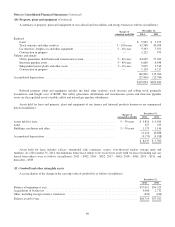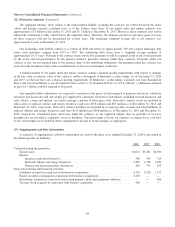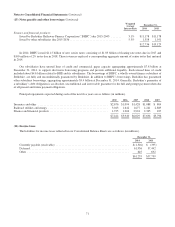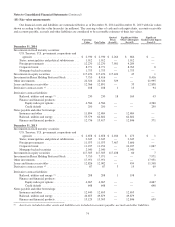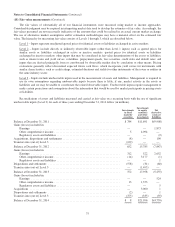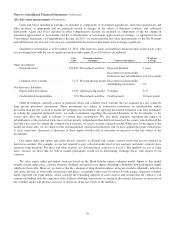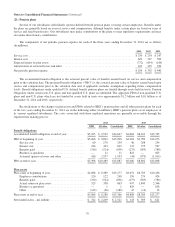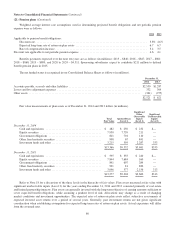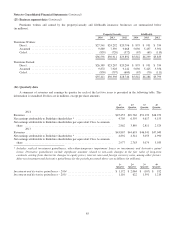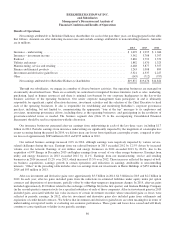Berkshire Hathaway 2014 Annual Report Download - page 78
Download and view the complete annual report
Please find page 78 of the 2014 Berkshire Hathaway annual report below. You can navigate through the pages in the report by either clicking on the pages listed below, or by using the keyword search tool below to find specific information within the annual report.
Notes to Consolidated Financial Statements (Continued)
(18) Fair value measurements (Continued)
Gains and losses included in earnings are included as components of investment gains/losses, derivative gains/losses and
other revenues, as appropriate and are primarily related to changes in the values of derivative contracts and settlement
transactions. Gains and losses included in other comprehensive income are included as components of the net change in
unrealized appreciation of investments and the reclassification of investment appreciation in earnings, as appropriate in our
Consolidated Statements of Comprehensive Income. In 2013, we transferred the fair value measurements of the GS Warrants
and GE Warrants out of Level 3 because we concluded that the unobservable inputs were no longer significant.
Quantitative information as of December 31, 2014, with respect to assets and liabilities measured and carried at fair value
on a recurring basis with the use of significant unobservable inputs (Level 3) follows (in millions).
Fair
value
Principal valuation
techniques Unobservable Inputs
Weighted
Average
Other investments:
Preferred stocks .................... $14,819 Discounted cash flow Expected duration 7 years
Discount for transferability
restrictions and subordination 147 basis points
Common stock warrants .............. 7,175 Warrant pricing model Discount for transferability
and hedging restrictions 7%
Net derivative liabilities:
Equity index put options ............. 4,560 Option pricing model Volatility 21%
Credit default municipalities .......... 250 Discounted cash flow Credit spreads 36 basis points
Other investments currently consist of preferred stocks and common stock warrants that we acquired in a few relatively
large private placement transactions. These investments are subject to contractual restrictions on transferability and/or
provisions that prevent us from economically hedging our investments. In applying discounted estimated cash flow techniques
in valuing the perpetual preferred stocks, we made assumptions regarding the expected durations of the investments, as the
issuers may have the right to redeem or convert these investments. We also made estimates regarding the impact of
subordination, as the preferred stocks have a lower priority in liquidation than debt instruments of the issuers, which affected the
discount rates used. In valuing the common stock warrants, we used a warrant valuation model. While most of the inputs to the
model are observable, we are subject to the aforementioned contractual restrictions and we have applied discounts with respect
to such restrictions. Increases or decreases to these inputs would result in decreases or increases to the fair values of the
investments.
Our equity index put option and credit default contracts are illiquid and contain contract terms that are not standard in
derivatives markets. For example, we are not required to post collateral under most of our contracts and many contracts have
relatively long durations. For these and other reasons, we classified these contracts as Level 3. The methods we use to value
these contracts are those that we believe market participants would use in determining exchange prices with respect to our
contracts.
We value equity index put option contracts based on the Black-Scholes option valuation model. Inputs to this model
include current index price, contract duration, dividend and interest rate inputs (including a Berkshire non-performance input)
which are observable. However, we believe that the valuation of long-duration options using any model is inherently subjective
and, given the lack of observable transactions and prices, acceptable values may be subject to wide ranges. Expected volatility
inputs represent our expectations, which consider the remaining duration of each contract and assume that the contracts will
remain outstanding until the expiration dates without offsetting transactions occurring in the interim. Increases or decreases in
the volatility inputs will produce increases or decreases in the fair values of the liabilities.
76


